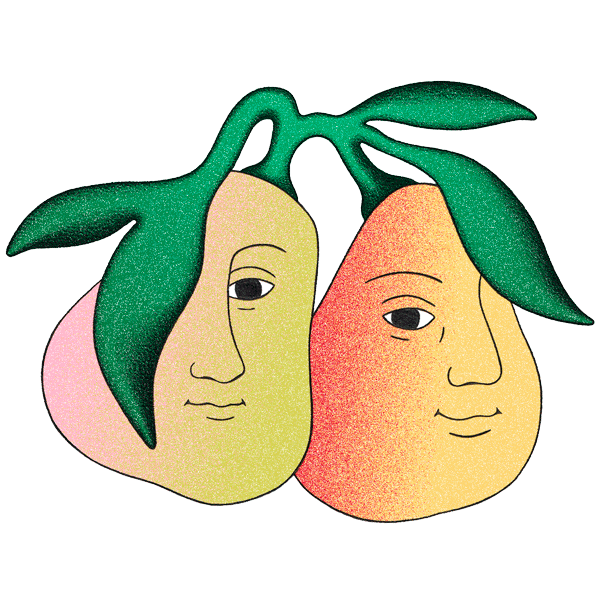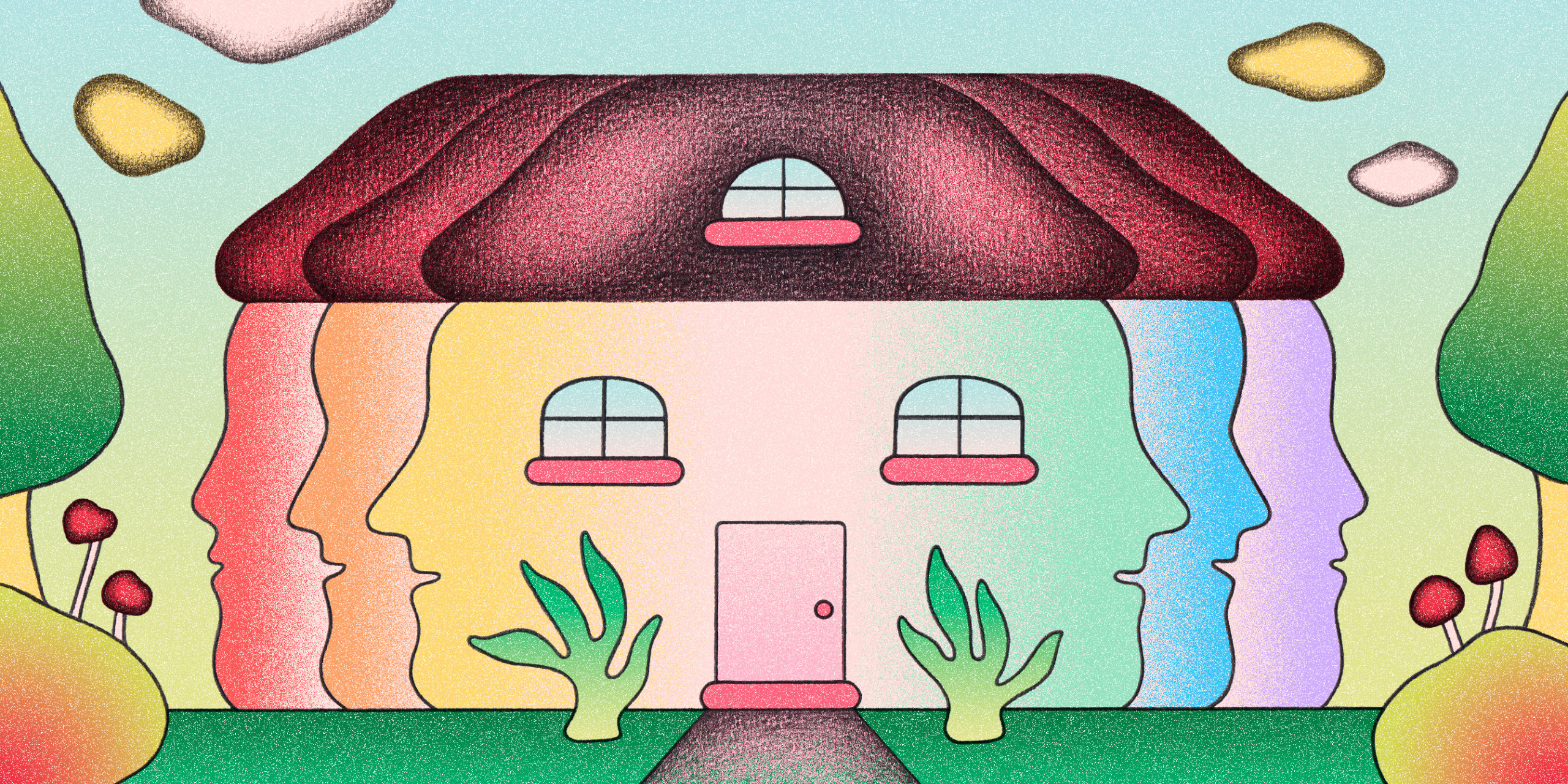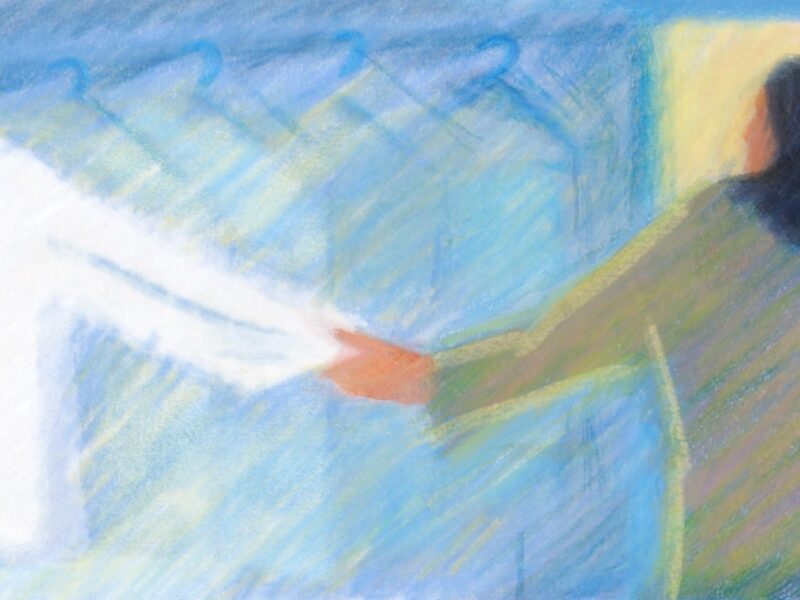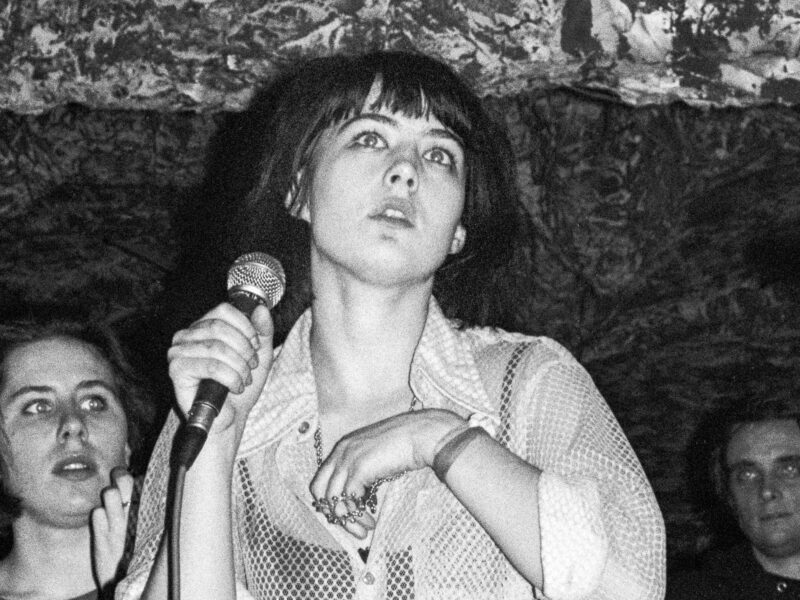No, I’m not joking.
Sitting on the front porch on a summer afternoon, in a straight back chair on two legs leaned against the wall. Iced tea or Aperol spritz in hand, Dolly on the record player. We’ve just gotten back from work or visiting elder neighbors or distributing hygiene kits and we’re looking out over the garden, where we grow tomatoes and kale on land returned to and rented from its local Native communities. Some of us will turn our harvest into a vegan vegetable lasagna, while others will do the dishes so no one doubles up on chores. After dinner, we’ll sit around a fire and wax optimistic about the rise of leftist governments in Latin America or the latest rom com, and dance with the kids and pets to Beyoncé until we all get sleepy and retire to our own quiet, comfortable quarters.
… I don’t know, I’m just spitballing here—but it sounds pretty idyllic to me.
For the past few years, I’ve been pitching friends, my girlfriend, and pretty much every person I meet on the idea of starting a queer commune. To me, it’s an easy and perfectly logical sell. Built-in relationships buffered by solitude? Not having to do all the chores (or buy a whole house) yourself? A spirit of chosen family and anti-heteronormativity? I’m not sure what more a millennial queer could want.
Often my audience goes along with it, affecting enthusiasm as if placating a child who’s playing pretend. “Let’s look in the desert!” one friend offers, then later sends me a Zillow listing for land outside Palm Springs. (I guess we’re building.) An ex-girlfriend tells me she and her fiancé joke about buying a multifamily house with her cousin and his boyfriend and raising kids together. A good friend from college and I discuss the animals, activities, and ethos of “the compound” we’ll one day end up on.

What these people fail to understand is that I am not playing—and whatever surface interest they show barely conceals their endgame. Because for every feigned “Fuck yeah” and “We’ll host art shows in our yard!” is another friend, another queer couple, lost to the decaying Xanadu of the American dream: individual homeownership. As they’ve been socialized to see it, they’re not just buying a house, but also buying into the promise of safety, stability, and comfort that can apparently only be secured with a mortgage. I watch, melancholic, as they succumb. This could be us, I whisper, painting pastorals of home-cooked meals you didn’t have to make unless you wanted to make them, and someone always there to take you to the airport, but you and your girlfriend would rather sink a million dollars into an 800-square-foot single-family.
~
I got my first glimpse of communal living in college. I had recently found queerness, and with it, a community of other queer students and alums who lived in double- and triple-deckers where they cooked together, learned from one another, and formed all kinds of relationships—living, laughing, loving, as it were. They probably would have identified this as “intentional living,” more than “commune living,” although both are essentially a group of people sharing space and resources. But semantics aside, they showed me a configuration that felt more loving, more normal, than the purported ideal of a suburban nuclear family. (Admittedly, I was also watching a lot of Big Love at the time.)
Particularly appealing about these spaces was their foundation of queer ethics. The residents were queer, yes, in sexuality, gender, or both, but beyond that, their politics resisted assimilation and oppression and were rooted in inclusive feminism. Many were activists and organizers in other leftist movements; the houses were an experiment in mutual aid, honest communication, and non-punitive measures for addressing harm. They were environments that allowed a multiplicity of relationships and intimacies to bloom. If you were poly, if you didn’t want kids, if you didn’t aspire to anything but being a kind person, if you were just a freak—you could feel at home.
It made sense not just theoretically, but also practically. As someone who prizes privacy and interdependence—and as an Aquarian who loves humanity but not always people—I was taken by the concept of having one’s own space with friends close by, all of us contributing skills and goods and relying on one another. I’m incapable of house maintenance, for example, but I’d happily do the group laundry. I don’t want to raise my own human children, but I think I’d thrive as a weird aunt.
Some might call this immature; a failure to properly adult. In dominant U.S. culture, there’s an expectation of ascending from living with parents or roommates to living alone or with a spouse. But we’re somewhat of a minority there: Around the world, the most common living arrangement is the extended family household. It tracks, then, that we’ve been fed classist and racist notions of communal living as unhealthy, unproductive, and un-American. After World War I, the U.S. government conceived and propagated the aspirational narrative of individual homeownership as a direct response to communism. Later, the Public Works and Federal Housing administrations socially engineered segregated public housing and underwrote the white (wealthied) suburbanization of the U.S. We want to own our own homes because—surprise, surprise—the idea was marketed to us.
If sharing a home with extended family or non-relations is antithetical to this country’s identity, it’s not just about forgoing individual property ownership. Communal living demands and facilitates a way of life that’s inherently anti-capitalist. Six people on one piece of land don’t need to buy six lawnmowers. Cohabitating with housemates from different backgrounds and life experiences gives way to social and political alignments that threaten the dominant paradigm. And if we didn’t have to do everything ourselves—if we weren’t solely responsible for keeping our lights on and our kids fed—what freedom might we know, both collectively and as individuals?
The pandemic, for all its hellishness, has blown illuminating holes through our picket fence individualism. Many of us who’d been relatively comfortable minding our own were suddenly confronted with the reality that we’re vulnerable without each other. We started getting to know our neighbors, trading toilet paper and sourdough starter. The number of multigenerational homes increased, and roommates—whether platonic or romantic—looked after one another when we fell sick. Covid (re)introduced us to communal care.
It also demonstrated and continues to demonstrate how profoundly our neoliberal systems have failed us. From fractured supply chains and healthcare infrastructure to insecure housing markets and wages continually eclipsed by the cost of living, instability and scarcity have blanketed the collective. Rent and inflation increases are knocking more people out of their homes, while more than 3 in 5 people in the U.S. are in debt. After so many mothers left their jobs to care for kids at home in 2020, there are still 1 million fewer women in the workforce two years later.

Why not abandon the road once laid out for us, now all buckled pavement and gaping potholes, and take a detour down the less trodden path of communal living? Why not create our own, ever-expanding social safety net? It’s been made clear that traditional structures of power aren’t going to save us. We are all we’ve got. And when we’re not on our separate, self-reliant islands—when we have more robust immediate support networks of people who may not share our surname—we’re better able to help others in our communities and ourselves. And it works: One recently founded commune, the Tenacious Unicorn Ranch, was explicitly developed as a safe haven for queer and trans people trying to survive the previous presidential administration, and continues to grow today.
I’m not too proud to admit I Zillow as much as the next person (though I remain disturbed by how soothing it can be). There are some things I value more, however, than four beds and two baths to myself. In my 20s, I lived with three other queer people who taught me how to change my oil and reminded me of the simple joy of passing an unplanned joint after work. In my current fourplex, we count on one another for emergency pet care, for “Are you home? I think I left my oven on,” and for an unexpected, genuine conversation when passing in the yard. (Not to mention the loaves of bread one of my neighbors regularly bakes for the rest of us.) It’s experiences like these that trigger the spark of connection, the comfort of knowing someone’s close by, and the familial warmth of being cared for and taking care.
The American Dream was never imagined with everyone in mind. At its best, individual homeownership evokes feelings of stability, safety, and attachment. At its worst, it embodies exclusionary consumerism and white-hetero tribalism. The queer commune offers all of the former without the latter, instead gifting collectivism, kinship, and the potential for social transformation. And probably some good homemade dessert.
Y’all coming?



